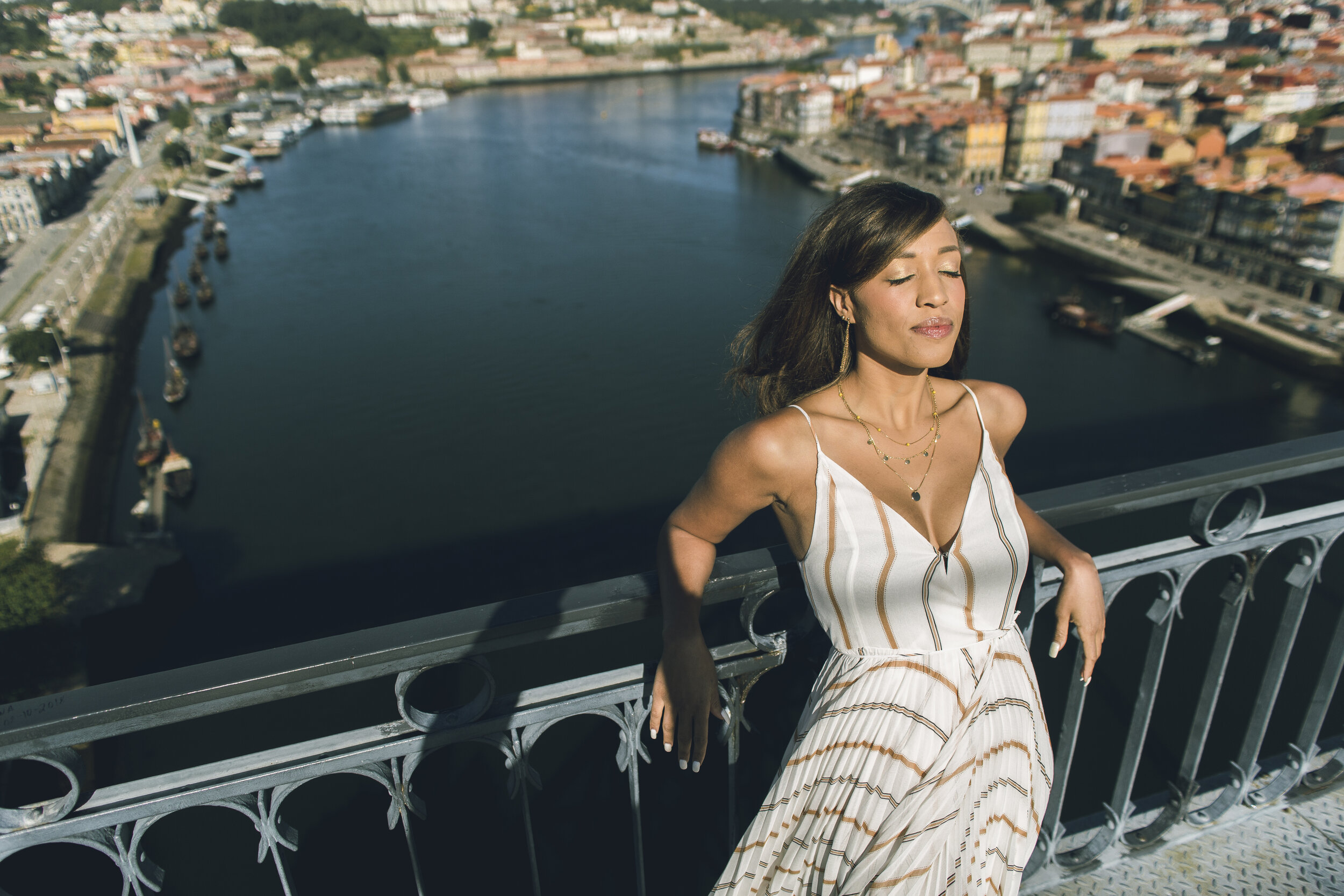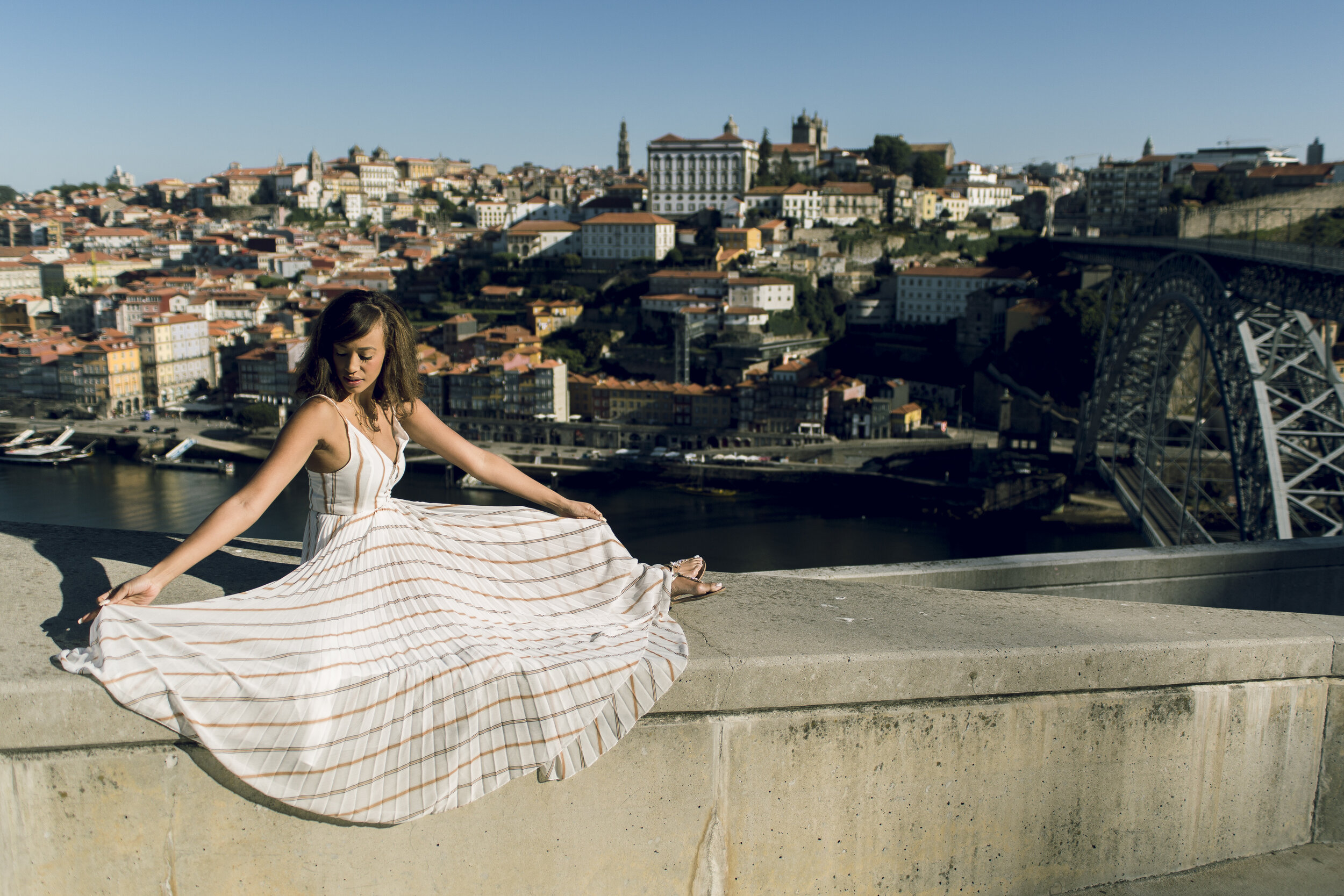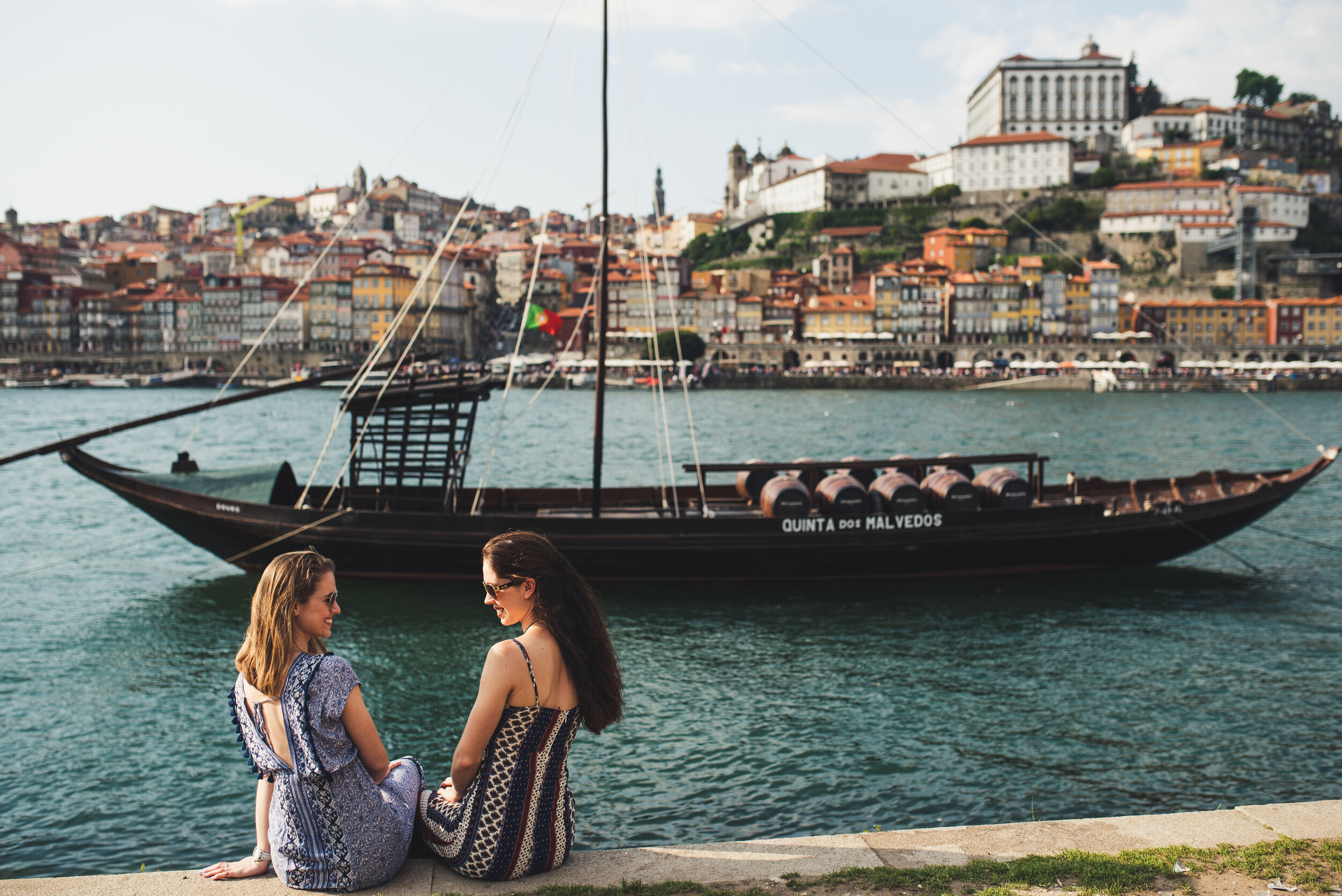A peek at Porto
The ancient trading city of Porto is located on the banks of the Douro River just before it spills into the Atlantic Ocean off the Northern coast of Portugal. It is the second largest city in the country whose name it influenced, and what we like to think of as the fierce, solid, and sincere cousin to Lisbon. Porto is the place you come to for the triple A’s: affordability, adventure, and authenticity 🇵🇹
Let’s take a peek at Porto, marveling at its granite churches and many bridges, meeting its no-nonsense and welcoming people, and tasting its unique flavors. And while we look around, keep in mind that we have eight talented, local photographers in Porto taking bookings right now. Choose one of our summer specials which you can use now or later!
The past
As with any city, Porto’s past tells you much about its present. The hardworking and independent citizens of Porto are definitely a product of its history.
With its Celtic roots, the city predates Roman occupation, after which it passed through the hands of various conquering peoples, such as the Visigoths and Moors, before becoming a part of an independent Portugal in 1143. But even then, the city continued to see different cultures and rulers, including Spain and then both the French and British during the Napoleonic Wars. It’s no wonder that the people have evolved into a fiercely liberal and progressive group unafraid to stand up to tyranny and fight for their civil rights. Today, the city is also known as Invicta, which means unconquered.
Remember Prince Henry the Navigator from school? He was born in Porto in the 14th century, which was when the city became an important trading port. It is also thanks to Prince Henry that the hearty citizens of Porto have come to be known as Tripeiros, or tripe-eaters.
In the 15th century, when all the meat from the city was needed to feed Henry’s fleet as it sailed off to war, the citizens had to make do with what was left behind: tripe, or stomach lining, and other unwanted parts. Never to let anything get the best of them, they took these humble ingredients and made the now-famous dish, Tripas à Moda do Porto (described in more detail below), surviving to see another day and embracing their new identity of Tripeiros.
The views
The views of Porto are made up of a multitude of colors, textures and historical sites, and the city offers multiple spots to take them all in.
Let’s start with the hues of this riverside city, which are all the colors of the rainbow. They are found in the rows of skinny, authentic homes in ancient neighborhoods with laundry hanging from balconies. In pops of green from city parks and hidden green spaces like the Jardins do Palácio de Cristal. In red-tiles roofs cascading down to the waterside and the delicate blues and whites of the azulejos tiles, like those decorating the Capela das Almas. And of course, in the glittering golden waters of the Douro, whose very name means “River of Gold.”
The texture of the city is one of cobblestone streets, monumental granite buildings, arcing bridges, distinct church towers like that of Clérigos Church, and the curves and lines of art deco and art nouveau architecture. Delve a little deeper, into the interiors of the Church of São Francisco, Porto Cathedral, and Church of Santa Clara and you’ll find all the twisting, spiraling intricacies and embellishments of the Baroque period.
The city is not shy and welcomes the admiring gaze of visitors and locals alike, offering many vantage spots.
Stand on the long, wide boulevard of Avenida dos Aliados, or Avenue of the Allies, to take in the Praça da Liberdade, a significant square that connects the old town (now a UNESCO world heritage site) with the modern city. Then stand in the Praça da Ribeira, an historic plaza, situated between the sparkling waters of the Douro and a maze of ancient streets.
See the city from the water on a river cruise or from one of the five bridges that span the Douro. The Luís I Bridge, a doubledecker iron bridge built in 1881, offers stunning sunset experiences from its top deck, now reserved for trams and pedestrians only. Other vantage points include the top of the tower Clérigos Church, the monastery or Mosteiro da Serra do Pilar, and restaurants on both sides of the river.
The flavors
The flavors of Porto are as adventurous as its famous seafarers and as hearty as its citizens. (Rumor has it that the Tripeiros have taken drink mixology to an uninhibited level, mixing Red Bull with their famous local port and other crazy concoctions.)
Here are some signature dishes and delicacies that reflect the soul of Porto:
Francesinha: Essentially, the “Frenchy,” a unique sandwich of roast beef, ham, linguiça sausage, all smothered in cheese and a tomato-beer sauce. Preferably served with more beer and french fries.
Seafood: This comes as no surprise given we’re in a port city. There is the famous salted cod, or bacalhau, which appears in dishes such as bacalhau com natas (cod with cream) and bolinhos de bacalhau (fried cod fish cakes). But there is also grilled octopus, or polpo, and an eel-like fish called lampreia.
Tripas à moda do Porto: Remember when the citizens of Porto had to give up all their meat? During that time they created what has become the official dish of Porto, a stew made with tripe and white beans. Today the delicacy also includes other meats and sausage.
Pastel de Nata: Also called Pastel de Belém, and technically from Lisbon, it is a sweet tart made of puff pastry filled with creamy egg custard and topped with cinnamon that are a favorite at the cafes.
Broa de Avintes: This is a popular dense, dark brown bread found in Northern Portugal and considered one of the delicacies found in Porto.
Tarte de Amêndoa: Another popular Northern Portugal dish, this time a dessert made from almonds found in both the filling and crust.
But, of course, Porto may be best known for that richly colored libation to which it also gave its name: port. The Douro Valley quickly became known as a rich wine-making region, as far back as Roman times. And during the Napoleonic War, when the British aristocracy was unable to get their hands on favorite French wines, they turned to Portuguese wines to satisfy their thirst. The wine was soon fortified with grape brandy in order to help it survive the journey from Portugal all the way to England, giving it its unique qualities and sweet flavor.
The vibe
It’s mercantile past has given it an industrial edge, but the old port has been softened by time. These days you’ll find more romance than commerce in the arcades of the riverside promenade. The smell of books and oiled wood in lovely bookstores like Livraria Lello and dreamy vistas from sun-kissed wine terraces invite more relaxation than industry.
And the city is not all historic neighborhoods and old churches. The people use their history to embrace vitality in the present, not just taking in sunsets from their bridges, for example, but also using them as an opportunity to adventure climb! There's modern architecture like the distinctive Casa da Música concert hall and exciting street art found throughout Porto’s various neighborhoods. There’s also a pervasive youthfulness, some coming from the University of Porto students who spill into cafes and clubs at nightime. There are beaches to chill on and an annual festival, Festa de São João, which infuses the city with a modern celebration of traditions (to include bopping everyone you meet on the head with a plastic hammer!) every June.
Porto is both gritty and sensual, ancient and modern, hip and traditional. And it’s this vibe that lures visitors, just as much as its views and flavors. Get there when you’re able, and book one of our amazing, local photographers to capture all your adventures in this earthy, captivating city.






